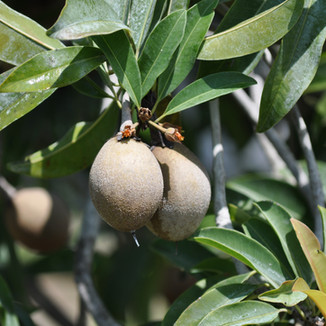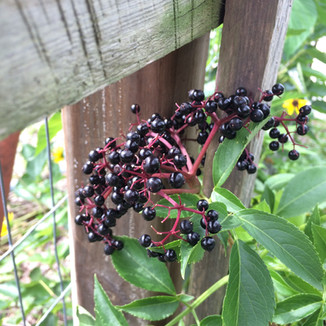Growing Fruit In Florida: Beyond the Citrus
- Mel Kanaris
- Jan 12, 2017
- 6 min read
Pete Kanaris, founder/owner of GreenDreams & Sandhill Farm, stated during last weekend’s farm tour introduction “Typical agriculture, such as citrus groves, is what is called a monoculture; just 1 species. We don’t have a citrus greening problem here in Florida; We have a management problem because of the way that it has been grown with only 1 species for so long. ” Following up on this subject, Pete also points out “If citrus had been grown using an ecological model (instead of a chemical model), we wouldn’t be in this dilemma. I feel that nature would have resolved itself. The right birds would have been resting nearby to take care of the problem or [even] a predatory insect would come along & taken care of the job.”

So many growers here in the state have been seeking alternate routes to agriculture, after the mass collapse of citrus groves we have seen over the last 10-15 years. Citrus Greening is a pathogen that is spread by an insect (Asian Psyllid) that was somehow introduced into state in the early 1970’s. This tiny little grim reaper of a bug has wiped out the majority of the 10million dollar industry within the state & is leaving the University of Florida agriculture program & commercial producers looking for other options. As much as we personally love our citrus & would love to have it’s versatility it in our own garden spaces, it comes with a high stake gamble. We feel that there are so many other viable options for fruit growers, but we want to emphasize that the commercial growers (& even amateurs) are aware of growing any kind of crop in a monoculture system. Monocultures DO NOT WORK. Simple as that. As infamous 4th generation farmer Will Harris, of White Oak Pastures, puts it “Nature arbores a monoculture.” If we want legitimate long-term success – we have to think holistically & implement a polyculture system with any mass crop that we plant. It’s beyond sustainable agriculture. It’s regenerative agriculture.
Pete Kanaris follows up his introduction to his guests stating “My opinion is that Florida is one of the best states in the country to grow fruit. We can grow everything from peaches, plums, persimmons, pears to mangos, lychees, longans & bananas. We are even growing olives.” Our special climate pocket allows us to grow our own selected temperate species in the right conditions just like the northern states can, but we are also blessed with winters mild enough to grow tropical/subtropical species in clever/protected spaces.

Here at Sandhill Farm, we are currently growing about 900 different varieties of fruiting trees, perennial & annual vegetables, herbs, spices & other plants that support our productive crops. Every day we are in awe of this abundant cornucopia. While we love every single edible & useful category, we are especially fond of the fruit. We are what you would call “fruit aficionados”, “rare fruit geeks” or our favorite description “FRUIT HUNTERS.” We literally live for this. We travel 4-5 hours south just to experience the best varieties of tropical & rare fruits & we usually come home with a truck full of fruit & a trailer full of trees to add to the nursery for our clients. You can definitely conclude that we know what we are talking about when it comes to the best fruit trees for the area & you can be sure that we are always expanding our knowledge & our inventory to share with you.
Just to give you an idea of the different fruiting trees we have here growing at Sandhill Farm (zone 9B), we’ve listed some of our fruits below. Within these species, we have countless varieties of each fruit giving us an exciting palette for our buyers & for our own tastebuds.
TEMPERATE FRUIT TREES/PLANTS: Blackberries, Strawberries, Mysore Raspberries, Blueberries, Jujube, Figs, Muscadine Grapes, Peaches, Pomegranates, Plums, Pears, Persimmons & Elderberries, Loquats, Mulberries & Olives
SUBTROPICAL/TROPICAL TREES: Avocadoes, Bananas, Sugar Apples, Coffee, Mangos, Dragonfruit, Canistel, Carambola (Starfruit), Guava, Jaboticaba (Brazilian Tree Grape), Jackfruit, Longans, Lychees, Loquats, Macadamias, Pineapples, Rollinia, Sapodilla, White Sapote, Black Sapote, Green Sapote, Barbados Cherry (Acerola), Monstera, Plantains, Papaya, Passionfruit, Miracle Fruit, Blue Grape, Guavas, Cattley Guavas, Pineappla Guava/Feijoa, Guava, Cherry of the Rio Grande, Surinam Cherry & Tamarind.

There are a few rules when it comes to planting a fruit tree within your space. We call them the Rule of P's: Placement, Proper Planting & Polyculture Planning
1. Placement
LOCATION, LOCATION, LOCATION.
General Rule: Temperate species will need full sun, while Tropical species do better in an understory environment (below an Oak canopy).These rules can usually bend a bit, but we have found the best success placing our temperate fruiting crops in the North West corner of our property line, (protected by a clumping bamboo hedge).NW winds tend to be the coldest & strongest, thereby the most damaging.We have taken temperature readings during our coldest winter mornings & concluded a 10degree temperature difference between the NW corner of our property & the oak canopy understory on the southeastern side of our home (wind protection).
The Oak canopy that covers the majority of our farm serves as a living greenhouse for us & has been a perfect place to plant our bananas, mangos, lychees & all of our favorite tropical & subtropical species.After a bit of careful tree trimming work, we now have enough sunlight to come through for photosynthesis,but still the right amount of winter canopy to shield us so frost cannot settle/temperatures stay warmer. (More on this subject later.)
Before you plant, it’s important to think ahead about protection.Certain species especially cannot handle wind, such as the Carambola (Starfruit).A Carambola tree will grow 10x as fast & will produce 10x more fruit if it’s in a wind protected area.If you are pushing the envelope by growing something that isn’t recommended for your area, just do like we do & keep them on the south side, as close to the home/structure as possible.(… & Right on, you rebel!)
2. Proper Planting
You can never plant a tree too high.When we prepare a hole for planting a fruit tree, we usually trench out an area only as wide as the width of the root ball, leaving the top of the root up & out of the ground.The native material that was taken from the planting hole can be used to pack around the sides of the exposed roots to create a plateau (always keep soil surface level/flat, never form a mountain.The plateau should be about 3x the width of the root ball.)After the tree is packed in tightly, a layer of mulch surrounding the edges will help to keep the ground moist & cool.If you plant the entire root ball, or plant too deep, the ground can settle leaving your tree exposed to standing water & rot or chances are that the area will be mulched, which will also leave the tree/plant in the same predicament.After a fruit tree is planted, watering the roots is only essential for the first few weeks.Once the transplant shock period has passed, occasional watering might be necessary during periods of drought or only if the tree looks dry/wilted.The idea is to cover the soil surrounding the tree’s location to add even more insurance to ground moisture, which brings us into the next rule…
3.Polyculture Planning
The need for multiple species planted within the same system has an infinite list of benefits.By implementing supportive species & other productive species, you are creating more diversity than you realize.Using the principals discussed through the permaculture model, the idea is to create layers of species.Each of these species can work synergistically to create a fruit producing system that can ultimately take care of itself.If it’s done correctly – your work will be minimal & your return will be paramount.Layers allow for bug-eating birds & offer camouflage for our favorite fruits, i.e.; you can sacrifice some of the Elderberries to the pests to spare a few of the mulberries.Another example is to plant nectar species to attract predatory insects to control the bugs that you don’t want.If you missed the subject on this, you can see the post about it here.Planting a living ground cover in your polyculture guild (group of plants) will ensure that your ground stays shaded & moist.Our favorite living ground covers, or cover crops, are perennial peanut, powderpuff mimosa, runner beans, sweet potatoes, tropical pumpkins & African potato mint.
Here are some of the Photos We've Snapped:





















































Great readingg your blog